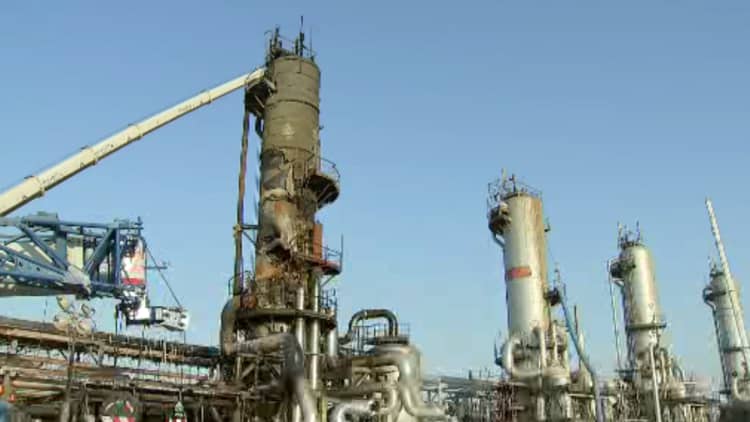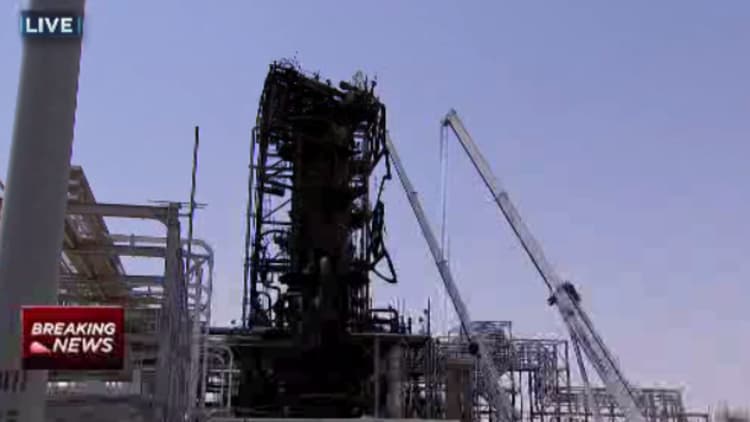
Repair work is underway at two Saudi Aramco oil facilities after predawn attacks on Saturday forced the kingdom to shut down half its total oil production.
The strikes targeted Saudi Arabia's Abqaiq and Khurais oil facilities, sparking concern about global oil supply stability, which sent crude prices soaring by double digits.
Abqaiq, located in the kingdom's oil-rich Eastern province, is the world's largest oil processing facility and crude oil stabilization plant with a processing capacity of more than 7 million barrels per day (bpd). Khurais, which lies about 110 miles southwest of Abqaiq, has capacity to pump around 1.5 million bpd.
In a tour run by the state-owned oil company, reporters were shown the damage at Aramco's facilities and the rebuilding work taking place. A company executive conducting the tour told CNBC's Hadley Gamble that 200 people were inside the Khurais facility when the sudden attack targeted four separate locations at the production plants.
The officials added that by the time the staff at the Khurais facility had attempted to put the fires out from the first wave of attacks, more strikes had targeted the plant.
The tour of the Khurais site revealed melted pipes and burnt areas which are now busy being repaired. Officials said 30% of the facility was back up and running within 24 hours and full production at Khurais will be reached before the end of September.
They added that the full country capacity of around 12 million barrels per day will be available by November, although in recent months the kingdom has been capping daily production at 10 million barrels.
The 70-year-old Abqaiq facility, which Aramco describes as state of the art, was attacked in 18 different locations, according to Saudi officials. Workers at the plant managed to get 2 million bpd of oil production back online within 48 hours and Aramco executives told CNBC on Friday that they are determined to reach normal output by the end of September.
In order to complete the repair work, Saudi Aramco has indicated it needs to ship equipment from both the United States and Europe.

Earlier this week, Saudi Col. Turki al-Maliki, spokesman for the Saudi-led coalition fighting Iranian-backed rebels in Yemen, said during a news briefing that 25 drones and missiles were used in the attack. Saudi authorities and the United States have said the drone and missile debris recovered by investigators, as well as the direction of fire, suggest Iranian culpability. Tehran has denied involvement.
Oil prices have seesawed as the threat of a military response appears to have lessened, but both Brent and West Texas Intermediate appear to be on course for gains of about 7% this week.
— Reuters and CNBC's Natasha Turak contributed to this report.


